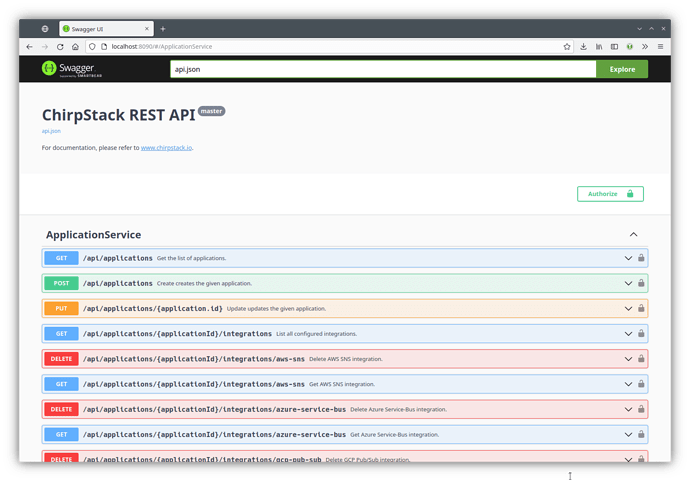There are loads in there and by copying the templates, you can make this yourself.
- Add it to here like so (removing the **'s):
"as923",
"as923_2",
"as923_3",
"as923_4",
"au915_0",
"cn779",
**"cn470",**
"eu433",
"eu868",
"in865",
"ism2400",
"kr920",
"ru864",
"us915_0",
"us915_1",
- Create the associated file (modifying possibly the CN779.toml one below) and save it as cn470.toml
# This file contains an example CN779 configuration.
[[regions]]
# Name is an user-defined identifier for this region.
name="cn779"
# Common-name refers to the common-name of this region as defined by
# the LoRa Alliance.
common_name="CN779"
# Gateway configuration.
[regions.gateway]
# Force gateways as private.
#
# If enabled, gateways can only be used by devices under the same tenant.
force_gws_private=false
# Gateway backend configuration.
[regions.gateway.backend]
# The enabled backend type.
enabled="mqtt"
# MQTT configuration.
[regions.gateway.backend.mqtt]
# Event topic template.
event_topic="cn779/gateway/+/event/+"
# Command topic template.
command_topic="cn779/gateway/{{ gateway_id }}/command/{{ command }}"
# MQTT server (e.g. scheme://host:port where scheme is tcp, ssl or ws)
server="tcp://mosquitto:1883"
# Connect with the given username (optional)
username=""
# Connect with the given password (optional)
password=""
# Quality of service level
#
# 0: at most once
# 1: at least once
# 2: exactly once
#
# Note: an increase of this value will decrease the performance.
# For more information: https://www.hivemq.com/blog/mqtt-essentials-part-6-mqtt-quality-of-service-levels
qos=0
# Clean session
#
# Set the "clean session" flag in the connect message when this client
# connects to an MQTT broker. By setting this flag you are indicating
# that no messages saved by the broker for this client should be delivered.
clean_session=true
# Client ID
#
# Set the client id to be used by this client when connecting to the MQTT
# broker. A client id must be no longer than 23 characters. When left blank,
# a random id will be generated. This requires clean_session=true.
client_id=""
# CA certificate file (optional)
#
# Use this when setting up a secure connection (when server uses ssl://...)
# but the certificate used by the server is not trusted by any CA certificate
# on the server (e.g. when self generated).
ca_cert=""
# TLS certificate file (optional)
tls_cert=""
# TLS key file (optional)
tls_key=""
# Gateway channel configuration.
#
# Note: this configuration is only used in case the gateway is using the
# ChirpStack Concentratord daemon. In any other case, this configuration
# is ignored.
[[regions.gateway.channels]]
frequency=779500000
bandwidth=125000
modulation="LORA"
spreading_factors=[7, 8, 9, 10, 11, 12]
[[regions.gateway.channels]]
frequency=779700000
bandwidth=125000
modulation="LORA"
spreading_factors=[7, 8, 9, 10, 11, 12]
[[regions.gateway.channels]]
frequency=779900000
bandwidth=125000
modulation="LORA"
spreading_factors=[7, 8, 9, 10, 11, 12]
# Region specific network configuration.
[regions.network]
# Installation margin (dB) used by the ADR engine.
#
# A higher number means that the network-server will keep more margin,
# resulting in a lower data-rate but decreasing the chance that the
# device gets disconnected because it is unable to reach one of the
# surrounded gateways.
installation_margin=10
# RX window (Class-A).
#
# Set this to:
# 0: RX1 / RX2
# 1: RX1 only
# 2: RX2 only
rx_window=0
# RX1 delay (1 - 15 seconds).
rx1_delay=1
# RX1 data-rate offset
rx1_dr_offset=0
# RX2 data-rate
rx2_dr=0
# RX2 frequency (Hz)
rx2_frequency=786000000
# Prefer RX2 on RX1 data-rate less than.
#
# Prefer RX2 over RX1 based on the RX1 data-rate. When the RX1 data-rate
# is smaller than the configured value, then the Network Server will
# first try to schedule the downlink for RX2, failing that (e.g. the gateway
# has already a payload scheduled at the RX2 timing) it will try RX1.
rx2_prefer_on_rx1_dr_lt=0
# Prefer RX2 on link budget.
#
# When the link-budget is better for RX2 than for RX1, the Network Server will first
# try to schedule the downlink in RX2, failing that it will try RX1.
rx2_prefer_on_link_budget=false
# Downlink TX Power (dBm)
#
# When set to -1, the downlink TX Power from the configured band will
# be used.
#
# Please consult the LoRaWAN Regional Parameters and local regulations
# for valid and legal options. Note that the configured TX Power must be
# supported by your gateway(s).
downlink_tx_power=-1
# ADR is disabled.
adr_disabled=false
# Minimum data-rate.
min_dr=0
# Maximum data-rate.
max_dr=5
# Rejoin-request configuration (LoRaWAN 1.1)
[regions.network.rejoin_request]
# Request devices to periodically send rejoin-requests.
enabled=false
# The device must send a rejoin-request type 0 at least every 2^(max_count_n + 4)
# uplink messages. Valid values are 0 to 15.
max_count_n=0
# The device must send a rejoin-request type 0 at least every 2^(max_time_n + 10)
# seconds. Valid values are 0 to 15.
#
# 0 = roughly 17 minutes
# 15 = about 1 year
max_time_n=0
# Class-B configuration.
[regions.network.class_b]
# Ping-slot data-rate.
ping_slot_dr=0
# Ping-slot frequency (Hz)
#
# set this to 0 to use the default frequency plan for the configured region
# (which could be frequency hopping).
ping_slot_frequency=0
 I was hoping to have some test Docker images last week, but I got blocked by some issues. I think I have found a solution, so hopefully I can share test-images later this week
I was hoping to have some test Docker images last week, but I got blocked by some issues. I think I have found a solution, so hopefully I can share test-images later this week 


